2020 Vulcan 1700 Vaquero ABS
Contents
The 2020 Kawasaki Vulcan 1700 Vaquero ABS is a mid-range touring cruiser designed not to cross continents, but more for a day trip up the California coastal highway. Powered by the same smooth 1700 cc SOHC 52 degree V-twin engine as the Voyager, the Vaquero is a bit punchier with 81 crank HP and 108 lbs-ft of crank torque thanks to a slightly meatier ECU tuning.
As well, the Vaquero comes with unified ABS braking, electronic cruise control, and build in hard-case sealed saddlebags, but compared to its big brother, the Vaquero has much less in terms of aerodynamic fairings. This means you’ll feel the wind on your legs and chest a lot more, which for some cruiser riders is exactly what they want.
The 2020 Kawasaki Vulcan 1700 Vaquero ABS starts at $16,799 US/$19,599 CA
On this page: we’ve curated specs, features, news, photos/videos, etc. so you can read up on the new Kawasaki Vulcan 1700 Vaquero ABS in one place.
Model Overview
General Info
- Price: $16,799 US/$19,599 CA
- Key Features:
- Abs (Anti-lock Brake System)
- Cruise Control
- LED Lighting
Key Specs
- Engine type: 1700cc, 4-stroke, 52 V-twin, liquid-cooled
- Power: 81 Hp
- Wet weight: 844 lb
- Seat height: 28.7 in
Key Competitors
- Honda Gold Wing DCT
- Yamaha Star Eluder
- Indian Chief Vintage
2020 Kawasaki Vulcan 1700 Vaquero ABS Specifications
ENGINE |
||
| Engine | 1700cc, 4-stroke, 52 V-twin, liquid-cooled | |
| Power | 81 Hp | |
| Bore x Stroke | 102.0mm x 104.0mm | |
| Compression Ratio |
9.5:1
|
|
| Fuel System | DFI® 42mm throttle bodies (2) | |
| Starter | Electric | |
| Lubrication | Forced lubrication, wet sump with oil cooler | |
DRIVETRAIN |
||
| Clutch | Wet multi-disc, manual | |
| Transmission | 6-speed | |
| Final Drive | Carbon fiber-reinforced belt | |
CHASSIS |
||
| Suspension Front | 45mm hydraulic fork/5.5 in | |
| Suspension Rear | Swingarm with twin air-assisted shocks, with 4-way rebound damping/3.1 in | |
| Brakes Front |
Dual 300mm discs, dual four-piston calipers, K-ACT II ABS
|
|
| Brakes Rear |
Single 300mm disc, twin-piston caliper, K-ACT II ABS
|
|
| Tires Front | 130/90×16 | |
| Tires Rear | 170/70×16 | |
| Fuel Tank Capacity | 20 L (5.3 US gal.) | |
| Color | Candy Imperial Blue | |
ELECTRICAL |
||
| Ignition | TCBI with digital advance | |
| Spark Plugs | ||
| Headlight | LED | |
| Tail Light | LED | |
DIMENSIONS |
||
| Overall Length | 98.8 in (2510 mm) | |
| Overall Width | 38.2 in (970 mm) | |
| Overall Height | 50.8 in (1,290 mm) | |
| Wheelbase | 65.6 in (1,665 mm) | |
| Ground Clearance | 5.7 in (145 mm) | |
| Seat Height | 28.7 in (730 mm) | |
| Curb Weight | 844 lbs (382 kg) | |
WARRANTY |
||
| Warranty | 36 Month Limited Warranty | |
| Extension | ||
2020 Kawasaki Vulcan 1700 Vaquero ABS Features
Electronic Cruise Control
Electronic Cruise Control allows a desired speed (engine rpm) to be maintained with the simple press of a button. Once activated, the rider does not have to constantly apply the throttle. This reduces stress on the right hand when traveling long distances, enabling relaxed cruising and contributing to a high level of riding comfort.
Electronic Throttle Valves
Kawasaki’s fully electronic throttle actuation system enables the ECU to control the volume of both the fuel (via fuel injectors) and the air (via throttle valves) delivered to the engine. Ideal fuel injection and throttle valve position results in smooth, natural engine response and the ideal engine output. The system also makes a significant contribution to reduced emissions.
Electronic throttle valves also enable more precise control of electronic engine management systems like S-KTRC and KTRC, and allow the implementation of electronic systems like KLCM, Kawasaki Engine Brake Control, and Electronic Cruise Control.
K-ACT (Kawasaki Advanced Coactive-braking Technology) ABS
At its heart, K-ACT ABS is an advanced anti-lock braking system, designed to keep tires from locking up during braking. But K-ACT ABS was designed to be used on touring models weighing in excess of 300 kg (661 lb) – and that is before adding a passenger and luggage.
Complementing its standard ABS function, K-ACT ABS links the front and rear brakes. It monitors the brake force the rider is exerting at both the front and rear, and takes into consideration vehicle speed to ensure highly effective braking while maintaining chassis stability.
For example, let’s say the rider pulls on the front brake lever. To keep the bike from pitching forward, the ABS ECU actuates the rear brake (via fluid pumps) to ensure that front-rear balance is maintained. Should the rider push the rear brake pedal, the system actuates the front brake as well to distribute the load more evenly so that the rear wheel does not lock up. Based on the vehicle speed, K-ACT decides the optimum hydraulic pressure to send to each caliper, ensuring that even with a heavy motorcycle, stable braking performance is possible.
2020 Kawasaki Vulcan 1700 Vaquero ABS Photos
Links
Kawasaki Official Websites

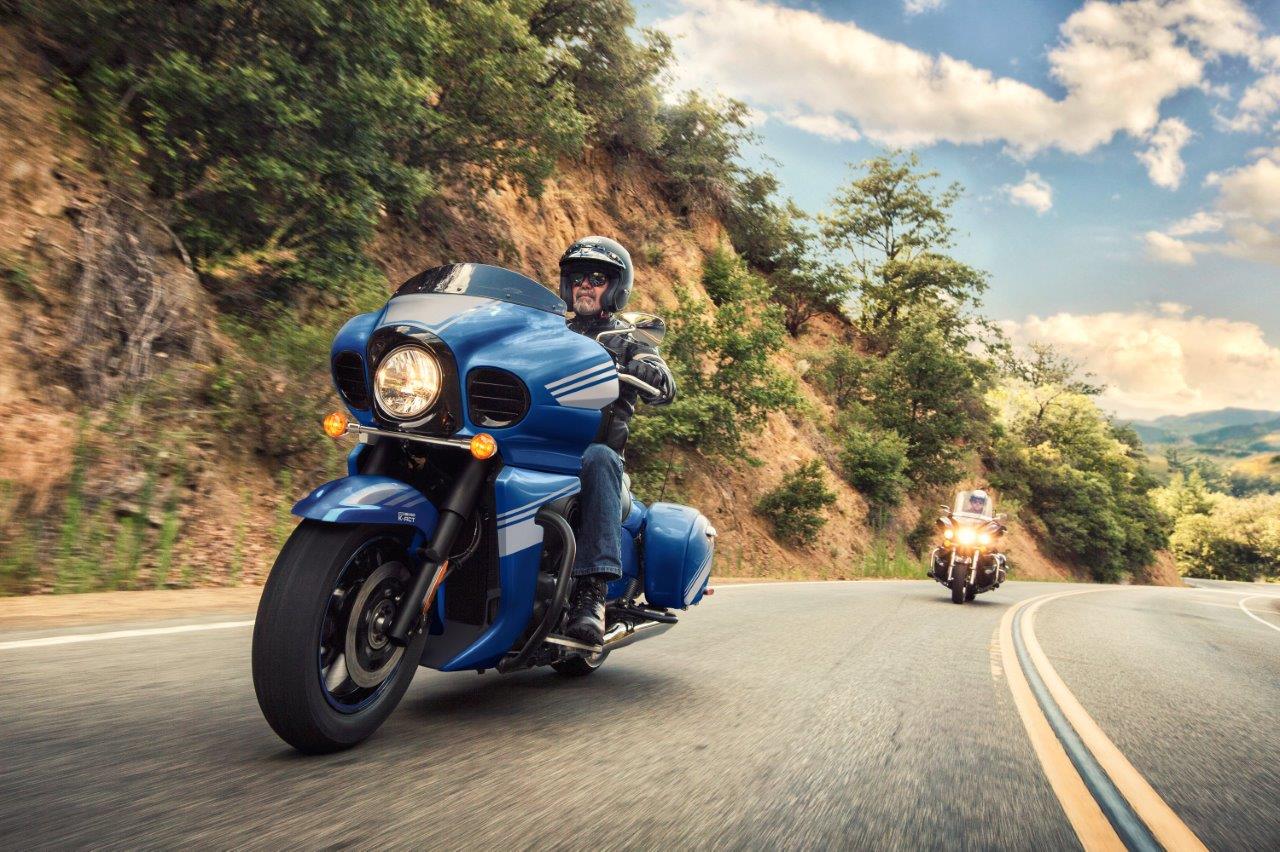
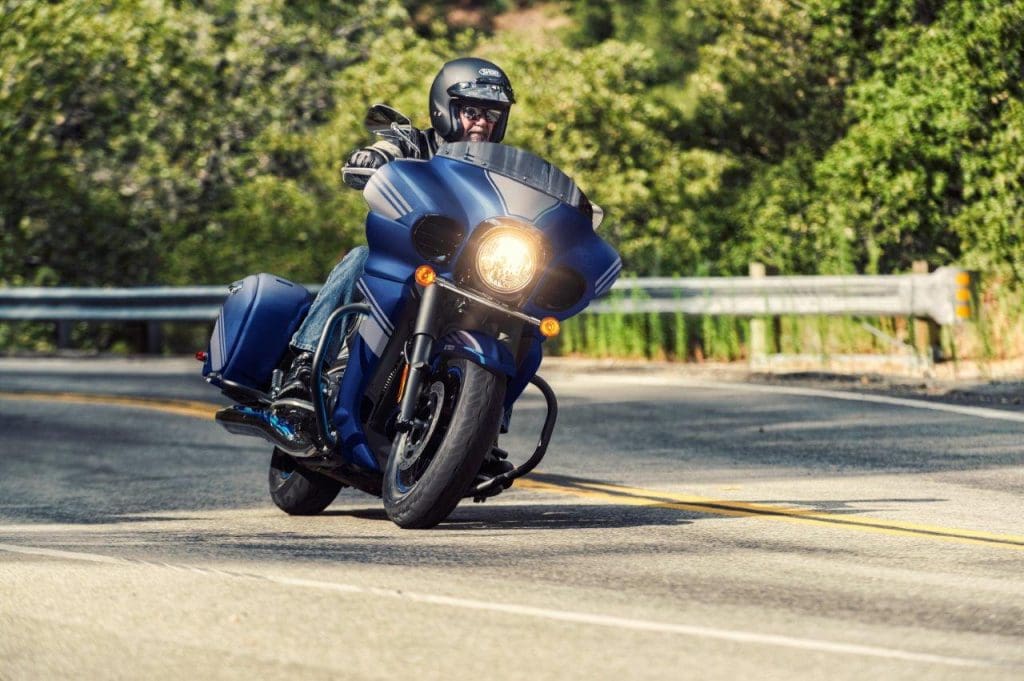
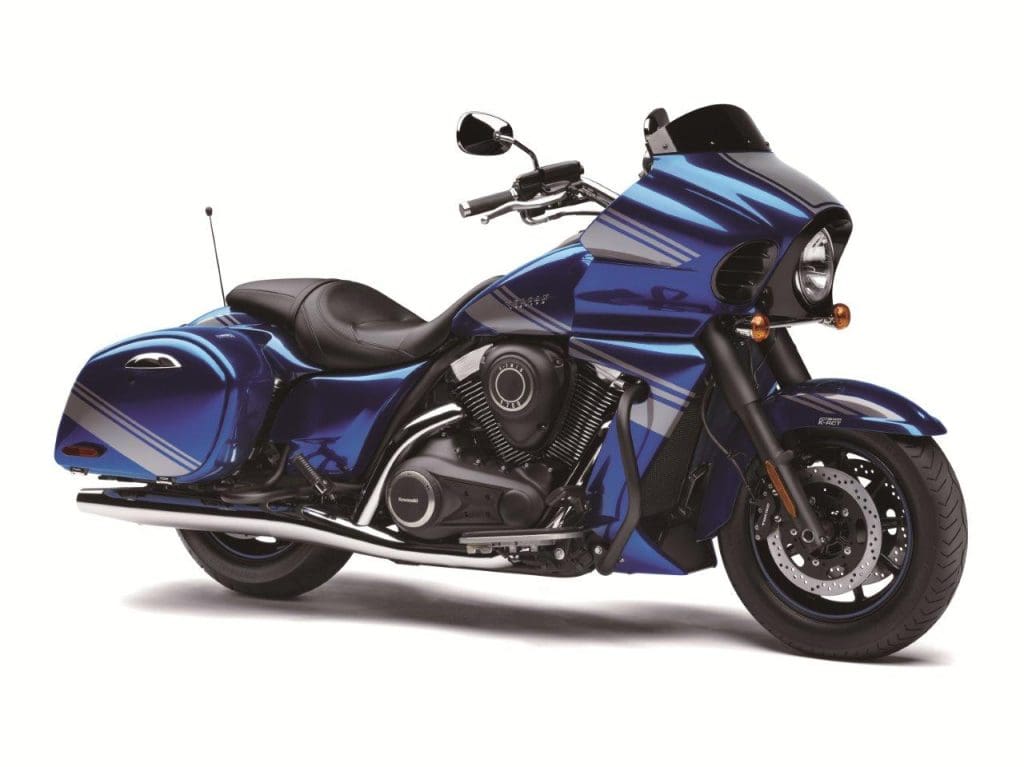
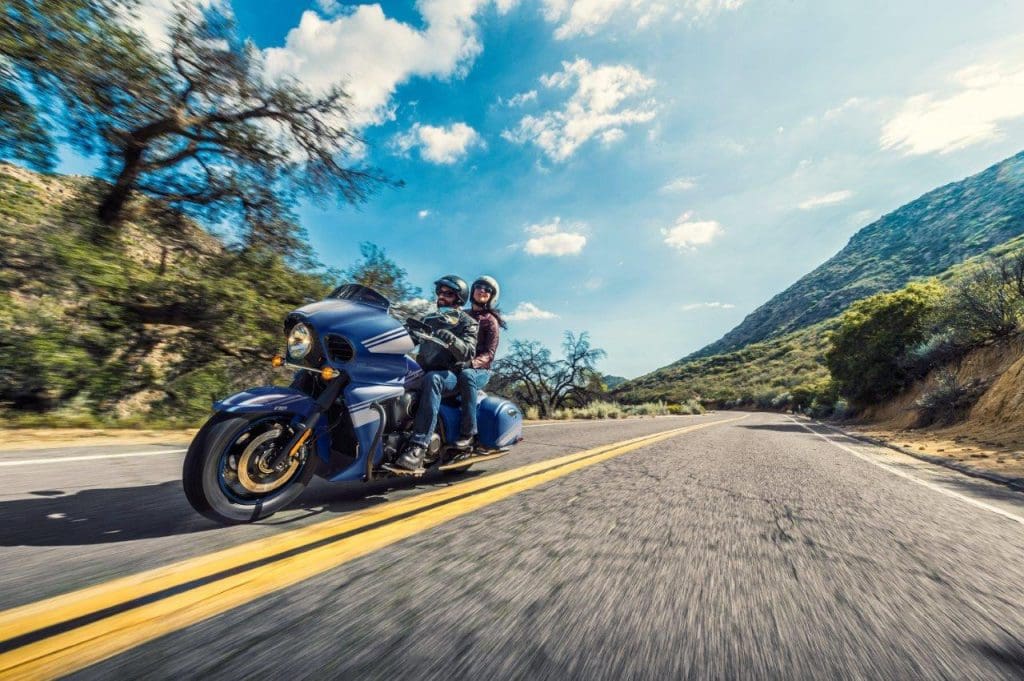
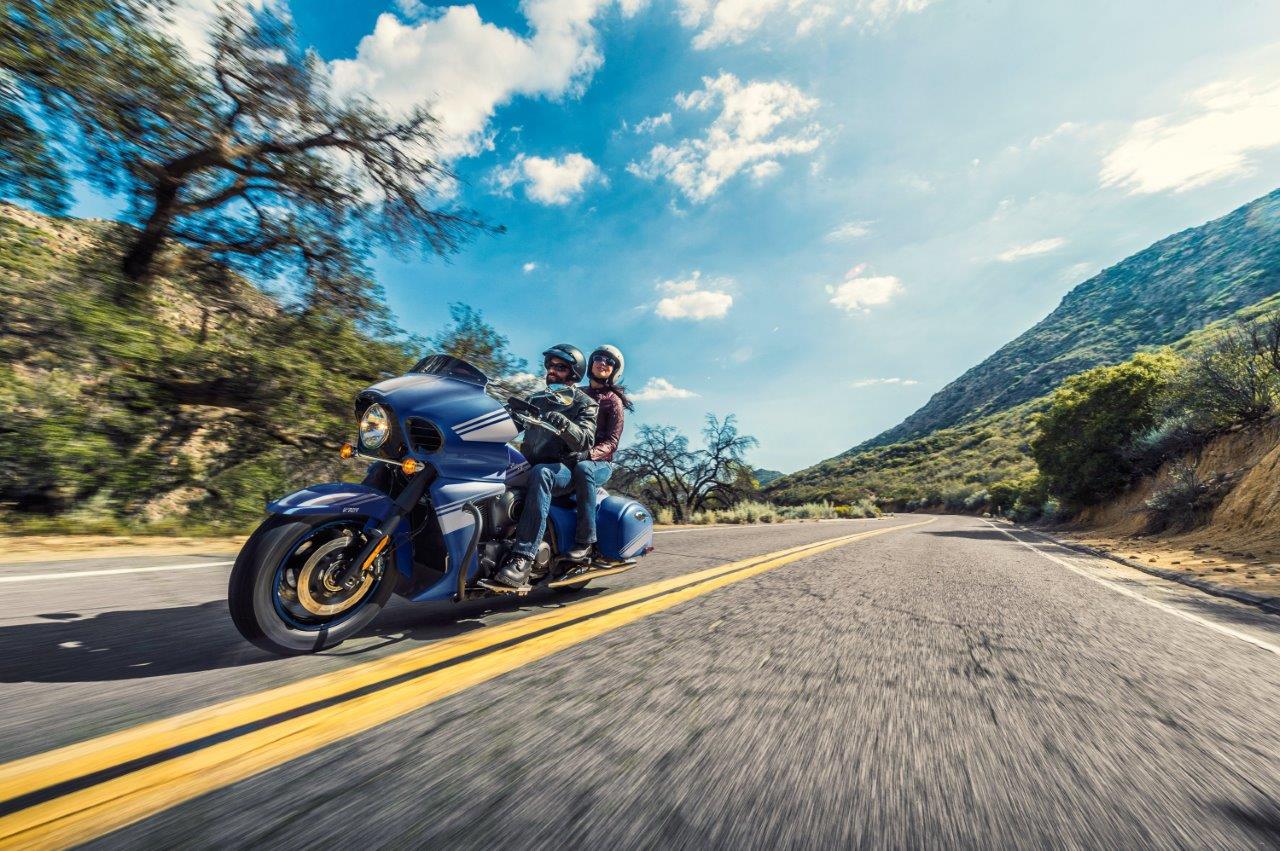
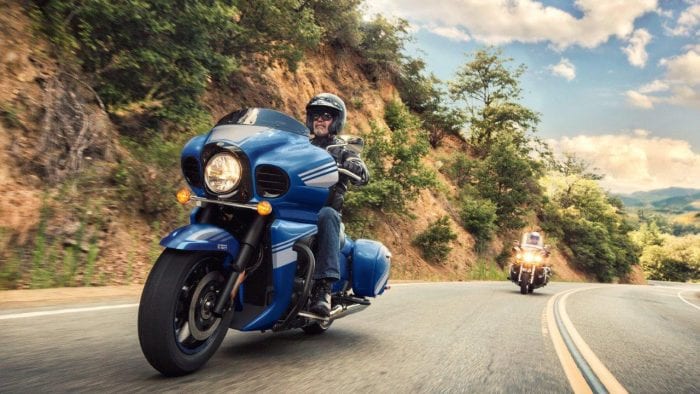
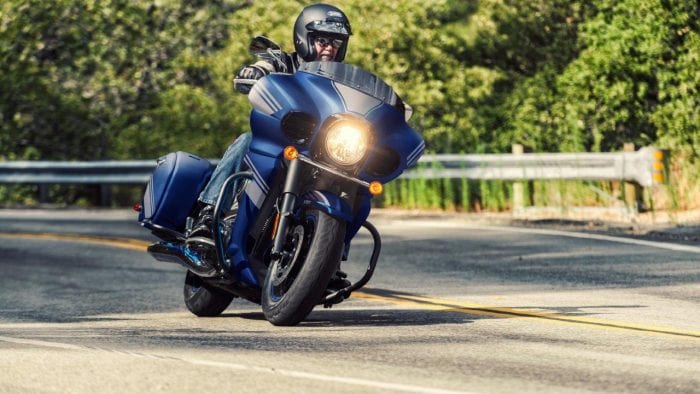

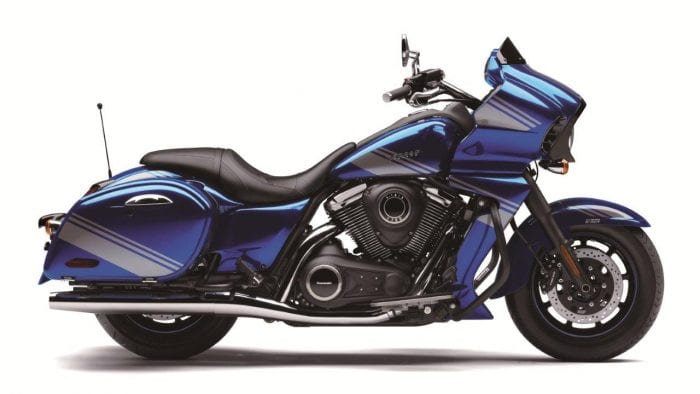
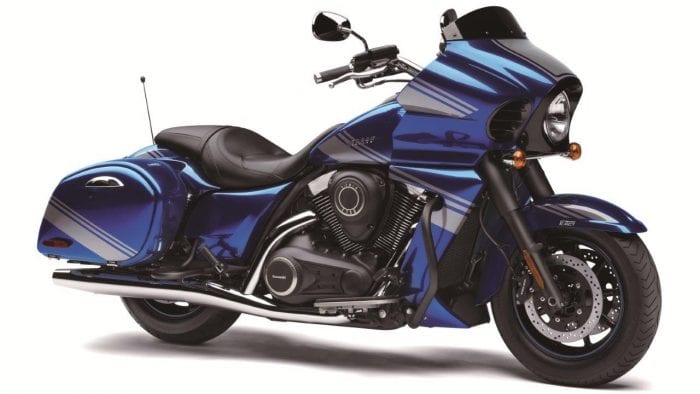
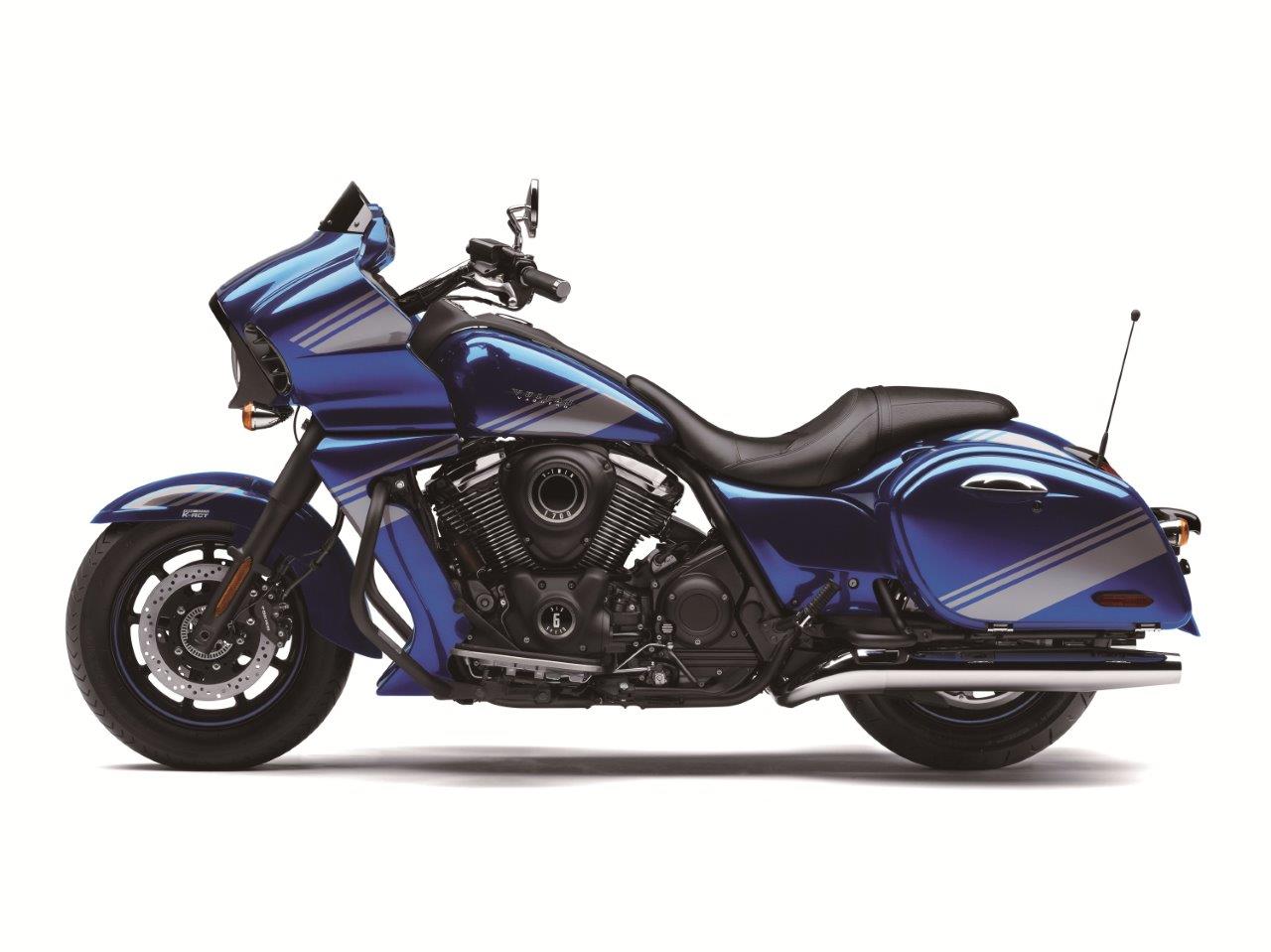

No Comment